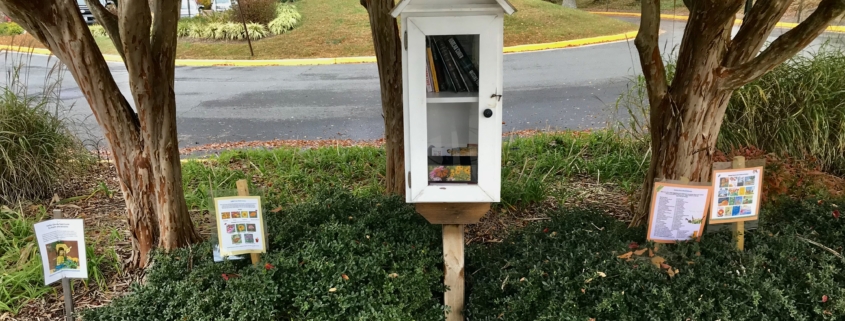From One Seed a Handful
It is always encouraging to hear of success stories from FMN volunteers. Then again it is also something special to hear from ‘friends of FMN’ just because they want to share a wonderful story with friends and like minded people and perhaps plant a seed for a future project.

Seed box on lower shelf. Photo – Jerry Nissley
Such is the case, literally and figuratively, with Sally Berman a friend of FMN Janet Quinn and a volunteer at South Run Park in Fairfax County. Sally emailed Janet saying, “I always enjoy reading the newsletter FMN puts together. So many great things are happening around the area!! I wanted to share a project we have started.”

Seed Library Reference sheet – courtesy of Sally Berman
She told about a team of dedicated South Run Park volunteers who brainstormed an idea they had while tending the gardens. “Why not start collecting seeds from the gardens to provide a sustainable local seed source?” Gardening is a wonderful time to germinate ideas, eh? Together with fellow volunteers Vick Maddox and Cheryl St. Amant the team started collecting seeds from the South Run plots as a means of sustaining the South Run gardens. As the collection grew they decided to spread the bounty.

Book Box Titles – courtesy of Sally Berman
The collection amassed quickly so they soon added a Free Little Seed Box to complement the existing Free Little Library Box that is adjacent the South Run playground. The book box is a clever idea in itself. Many of the book titles reference a plant, flower, vegetable, or gardening topic of some sort. So the seed box conceptionally works well within the book box. There is also a long list of gardening infused children’s book titles posted along side the book box as shown in the cover photo.

Kid’s Garden across from the Book and Seed Box. Photo Jerry Nissley
The team also maintains the South Run ‘Native Knoll’ created a few years ago to showcase the use of native plantings in a public landscaping project.
If FMN volunteers would like to advise the team on the use of appropriate native plants for any of the sites or help care for the Knoll or gardens please contact Sally Berman at skberman77@gmail.com.
FMN volunteers may use service code: Parks – S109: FCPA Habitat and Parkland Management – – Fairfax County Park Authority (FCPA)
“From one seed a whole handful …” J.M. Coetzee












